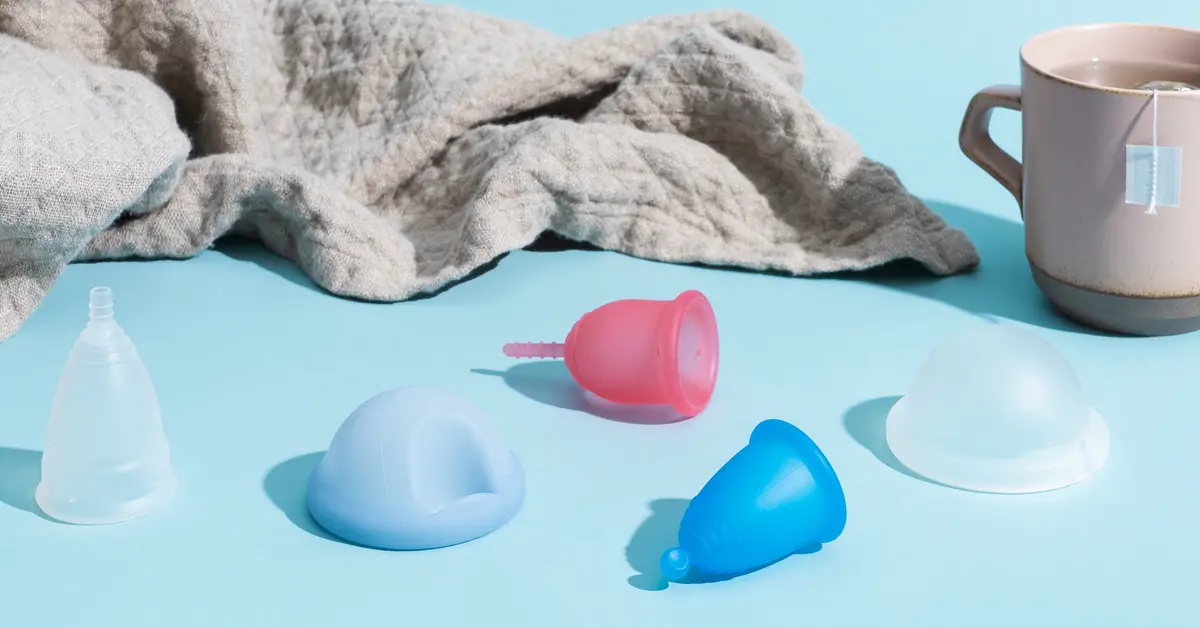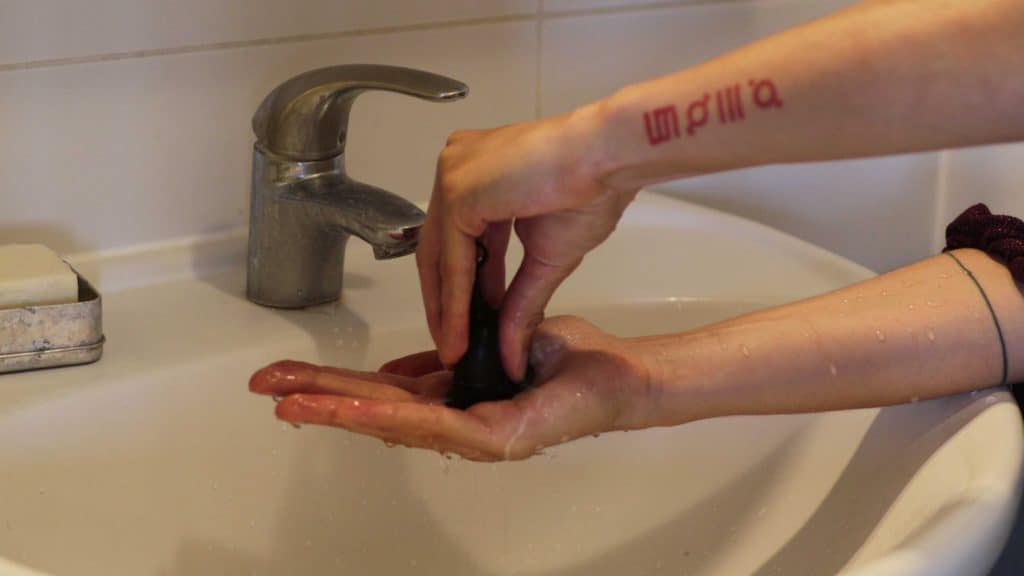When it comes to menstrual cups, the benefits are undeniable. They are cost-effective, eco-friendly, and come with numerous health advantages. Unlike disposable menstrual products, menstrual cups do not contain any chemicals or toxins, making them a healthier option. However, it’s essential to understand that menstrual cups may not be suitable for everyone, and some individuals may experience side effects or face challenges when using them. In this article, we will look into the possible side effects of menstrual cups and provide tips on how to minimize the risk.
Contents
Menstrual Cup Side Effects

While menstrual cups have numerous benefits, it’s important to be aware of the potential side effects and take necessary precautions for a safe and comfortable experience.
Possible Side Effects:
- Discomfort or Leakage: Some individuals may experience discomfort or leakage when using a menstrual cup. This could be due to improper insertion or incorrect sizing of the cup.
- Odor: Menstrual cups are designed to collect menstrual blood, but there may be a slight odor associated with their use. However, this odor is typically less noticeable compared to using disposable menstrual products.
- Allergic Reactions: Although rare, some individuals may have allergies or sensitivities to the materials used in menstrual cups. This can result in itching, irritation, or redness. If you experience any of these symptoms, discontinue use and consult a healthcare professional.
- Difficulty Removing the Cup: In some cases, individuals may have difficulty removing the menstrual cup. This can be caused by a strong suction created when the cup is inserted. It’s important to relax and gently break the seal before attempting to remove the cup.
Minimizing the Risk:
To minimize the risk of side effects when using a menstrual cup, follow these tips:
- Proper Insertion: Ensure that the cup is inserted correctly and comfortably. It should sit low in the vaginal canal, below the cervix. If you feel discomfort or the cup is leaking, try adjusting the position or reinserting it.
- Proper Sizing: Choose a menstrual cup that is the right size for your body. Cups come in different sizes based on factors such as age, childbirth history, and flow intensity. Using the wrong size can increase the risk of discomfort and leakage.
- Good Hygiene Practices: Wash your hands thoroughly before inserting or removing the menstrual cup to prevent the risk of infection. Additionally, wash and sterilize the cup between uses according to the manufacturer’s instructions.
- Regular Inspection: Before each use, inspect the menstrual cup for any cracks, tears, or signs of wear and tear. If the cup is damaged, replace it with a new one to ensure proper functionality and reduce the risk of leaks or discomfort.
Remember, while side effects from menstrual cups are relatively rare, it’s important to be aware of them and take the necessary precautions to minimize any potential risks. By following these guidelines, you can have a safe and comfortable experience
Common Side Effects
Leakage
One of the most common side effects of using a menstrual cup is leakage. While menstrual cups are designed to be leak-free, it can sometimes happen, especially if the cup is not inserted properly or if it is overflowing. To minimize the risk of leakage, make sure to:
- Choose the right size: Using the correct size of menstrual cup is crucial for preventing leakage. If you experience frequent leaks, consider trying a different size that fits your body better.
- Insert the cup correctly: Proper insertion is key to preventing leaks. Make sure the cup forms a seal against the vaginal walls by gently twisting it or running a finger around the rim to ensure a secure fit.
- Empty the cup regularly: Emptying the cup every 4 to 6 hours, or more frequently if you have a heavier flow, can help prevent overflow and minimize the risk of leaks.
Discomfort
Some women may experience discomfort while using a menstrual cup, especially during the initial period of adjustment. This discomfort can manifest as a feeling of pressure, pinching, or irritation. Here are a few tips to alleviate discomfort:
- Try a different fold: Experimenting with different folding techniques can help you find a fold that is more comfortable for you. Popular folds include the “C-fold,” “punch-down fold,” and “7-fold.”
- Trim the stem: If the stem of the cup is causing discomfort, you can trim it to a length that feels more comfortable. However, be cautious not to trim it too short, as it may become difficult to remove the cup.
- Relax your muscles: Relaxing your pelvic floor muscles during insertion and removal can help reduce discomfort. Take slow, deep breaths and try to stay calm and relaxed throughout the process.
Odor
Contrary to popular belief, menstrual cups do not cause odor. In fact, they can help reduce odor compared to traditional menstrual products. However, if you notice an odor while using a menstrual cup, it could be a sign of poor hygiene or an infection. Here are some tips to prevent odor:
- Practice good hygiene: Wash your hands thoroughly before and after inserting or removing the cup. Clean the cup with mild, fragrance-free soap and warm water between uses. Avoid using harsh chemicals or scented products, as they can disrupt the natural pH balance of your vagina.
- Ensure proper cleaning: Sterilize the cup before and after your period by boiling it in water for a few minutes. Allow it to air dry completely before storing it in a clean, breathable container.
- Consult a healthcare professional: If you experience persistent odor or other unusual symptoms, it’s important to consult a healthcare professional for a proper diagnosis and treatment.
Remember, while these side effects can occur, they are generally rare and can often be minimized with proper use and maintenance. Don’t hesitate to reach out to fellow cup users or healthcare professionals if you have any concerns or questions.
Allergic Reactions
Latex Allergy
If you have a latex allergy, it’s important to be aware that some menstrual cups are made with latex. Latex is a natural rubber material that can cause allergic reactions in certain individuals. Symptoms of a latex allergy can range from mild to severe and may include itching, redness, swelling, and even difficulty breathing.
To avoid an allergic reaction, make sure to choose a menstrual cup that is latex-free. Look for cups that are made from medical-grade silicone or other hypoallergenic materials. Reading the product description or checking with the manufacturer can help you determine if the cup is latex-free.
Silicone Allergy
While silicone is considered to be hypoallergenic for most people, a small number of individuals may still have an allergic reaction to it. Symptoms of a silicone allergy can include skin irritation, redness, itching, and swelling.
If you suspect that you have a silicone allergy, it’s best to consult with a healthcare professional. They can help determine if the symptoms are indeed caused by a silicone allergy or if there may be another underlying issue. In some cases, they may recommend trying a different material, such as TPE (thermoplastic elastomer), which is also used in some menstrual cups.
Remember, if you experience any allergic reactions or discomfort while using a menstrual cup, it’s important to discontinue use and consult with a healthcare professional. They can provide guidance and help you find a suitable alternative that works for you.
Maintenance and Hygiene

Now that we’ve covered the topic of allergic reactions, let’s move on to the importance of proper maintenance and hygiene when using a menstrual cup. It’s essential to take care of your cup to minimize the risk of infections and other potential side effects.
Cleaning and Sterilizing
After each use, it’s crucial to thoroughly clean and sterilize your menstrual cup. This helps remove any bacteria, debris, or residue that may have accumulated. Follow the manufacturer’s instructions for cleaning and sterilizing your cup, as different brands may have specific recommendations.
Most menstrual cups can be boiled in water for a few minutes to sterilize them. Additionally, there are specially-formulated cup cleansers available on the market that can be used for daily cleaning. Avoid using harsh soaps, fragrances, or other cleaning products that may irritate your delicate vaginal area.
Changing and Emptying
To prevent leakage and potential discomfort, make sure to change and empty your cup regularly. The frequency of emptying will depend on your flow, but it’s generally recommended to empty the cup every 4 to 12 hours.
When emptying your cup, wash your hands thoroughly before and after. Empty the contents into the toilet, rinse the cup with warm water, and reinsert it. Remember, it’s important to always use clean water and avoid using any harsh chemicals or soaps on your cup.
Proper Storage
When you’re not using your menstrual cup, it’s important to store it properly to maintain its cleanliness and integrity. Keep your cup in a breathable fabric pouch or a designated cup storage container. Avoid storing it in an airtight container or plastic bag, as this can trap moisture and potentially lead to the growth of bacteria.
By following these maintenance and hygiene practices, you can help minimize the risk of side effects and ensure a comfortable and safe experience with your menstrual cup.
Infection Risks

Toxic Shock Syndrome (TSS)
One potential side effect of using menstrual cups is the risk of developing Toxic Shock Syndrome (TSS). TSS is a rare but serious condition that can be caused by the growth of bacteria in the vagina. While the risk of developing TSS is low, it’s important to be aware of the symptoms and take necessary precautions.
Symptoms of TSS can include sudden high fever, vomiting, diarrhea, dizziness, and rash. If you experience any of these symptoms while using a menstrual cup, it’s crucial to remove the cup immediately and seek medical attention. TSS can progress rapidly, so it’s important to act quickly.
To minimize the risk of TSS, it’s important to follow proper hygiene practices. Wash your hands thoroughly before inserting or removing the cup. Make sure to clean the cup thoroughly after each use, using a mild, fragrance-free soap. Avoid using harsh chemicals or disinfectants, as they can damage the cup and irritate the vagina.
Bacterial Vaginosis
Another potential infection risk associated with menstrual cup use is bacterial vaginosis (BV). BV is a common vaginal infection that occurs when there is an imbalance in the bacteria in the vagina. While BV is not usually serious, it can cause discomfort and unpleasant symptoms.
The use of menstrual cups can potentially disrupt the natural balance of bacteria in the vagina, leading to the development of BV. To minimize the risk of BV, it’s important to maintain proper hygiene and cleanliness. Clean the cup thoroughly after each use and make sure to store it in a clean and dry place.
If you experience symptoms such as unusual vaginal discharge, itching, or a strong fishy odor, it’s important to consult with a healthcare professional. They can provide a proper diagnosis and recommend appropriate treatment options.
Yeast Infections
Yeast infections are another potential side effect of using menstrual cups. Yeast infections are caused by an overgrowth of yeast in the vagina, leading to symptoms such as itching, burning, and thick white discharge.
The use of menstrual cups can create an environment that is favorable for the growth of yeast. To minimize the risk of yeast infections, it’s important to maintain proper hygiene and cleanliness. Clean the cup thoroughly after each use and make sure to dry it completely before reinserting.
If you develop symptoms of a yeast infection, such as itching or discomfort, it’s important to seek medical advice. A healthcare professional can provide a proper diagnosis and recommend appropriate treatment options to relieve your symptoms.
Remember, while there is a potential risk of infection associated with menstrual cup use, it is important to note that these risks are generally low. By following proper hygiene practices and being aware of the symptoms, you can minimize the risk and enjoy the benefits of using a menstrual cup.
What is Gynecologists’ Opinion on Menstrual Cups?
Gynecologists generally have a positive opinion of menstrual cups. Many experts consider them to be a safe and effective alternative to traditional menstrual products. Menstrual cups are made from medical-grade silicone, latex, or rubber, which minimizes the risk of irritation or allergic reactions.
Gynecologists often recommend menstrual cups to their patients for several reasons:
- Reduced risk of infections: Menstrual cups do not disrupt the natural pH balance of the vagina, unlike tampons, which can absorb moisture and increase the risk of bacterial vaginosis (BV) or yeast infections. The smooth and non-absorbent surface of menstrual cups makes it difficult for bacteria to grow.
- Prevention of Toxic Shock Syndrome (TSS): TSS is a rare but potentially life-threatening condition associated with the use of tampons. Unlike tampons, menstrual cups do not create an environment conducive to the growth of the bacteria that can cause TSS.
- Less impact on the environment: Gynecologists often appreciate the environmental benefits of menstrual cups. They can be reused for several years, reducing waste and the carbon footprint associated with disposable menstrual products. By choosing a menstrual cup, you can make a positive impact on the environment.
It is essential to consult with your gynecologist before using a menstrual cup, especially if you have any underlying medical conditions or concerns. They can provide personalized advice and address any specific concerns you may have.
Remember, every woman’s body is unique, and what works for one person may not work for another. It may take some time and experimentation to find the right menstrual cup and to become comfortable with using it. But with the guidance of a gynecologist and a little patience, many women have found menstrual cups to be a safe and reliable option for managing their periods.
Conclusion
By understanding and following proper use and maintenance guidelines, you can minimize the risk of experiencing side effects with menstrual cups. This includes selecting the right size, ensuring correct insertion, and regularly emptying the cup to prevent leakage.
While there are potential risks associated with menstrual cups, such as Toxic Shock Syndrome (TSS), bacterial vaginosis (BV), and yeast infections, these risks can be minimized through proper hygiene practices. It’s important to note that gynecologists generally view menstrual cups as safe and effective alternatives to traditional menstrual products. They often recommend them to patients due to the reduced risk of infections and TSS, as well as the environmental benefits of reducing waste and carbon footprint.
However, since every woman’s body is unique, it’s always a good idea to consult with a gynecologist before using a menstrual cup. They can provide personalized advice and address any concerns you may have. With practice and patience, many women have found menstrual cups to be a safe and reliable option for managing their periods. So, don’t hesitate to give them a try and see if they work well for you!
What do gynecologists say about menstrual cups?
Gynecologists recommend menstrual cups as a safe and effective alternative to traditional menstrual products. They are considered environmentally friendly and maintain vaginal pH and eco flora, preventing vaginal infections.
What health issues can menstrual cups cause?
Infection is a rare complication of menstrual cup use. If it does occur, it is more likely due to the transfer of bacteria from hands to the cup rather than the cup itself. Imbalanced vaginal pH can lead to yeast infections and bacterial vaginosis.
Do menstrual cups increase the risk of endometriosis?
Menstrual cups can theoretically increase the risks of endometriosis or adenomyosis as they may trigger retrograde menstruation. They also create a medium for bacterial growth, which could increase the risk of infection.
Do menstrual cups release toxins?
Menstrual cups, like tampons, introduce oxygen into the vaginal canal, creating an environment for bacterial growth. This can lead to the production of toxins by bacteria, but the risk is low.
What are the side effects of a menstrual cup?
Improper cleaning of the cup can cause vaginal irritation. Without lubrication, inserting the cup may be painful and can cause rashes. Those allergic to silicone should avoid using menstrual cups.
I am a medical student with experience and interest in Women’s health and well-being.